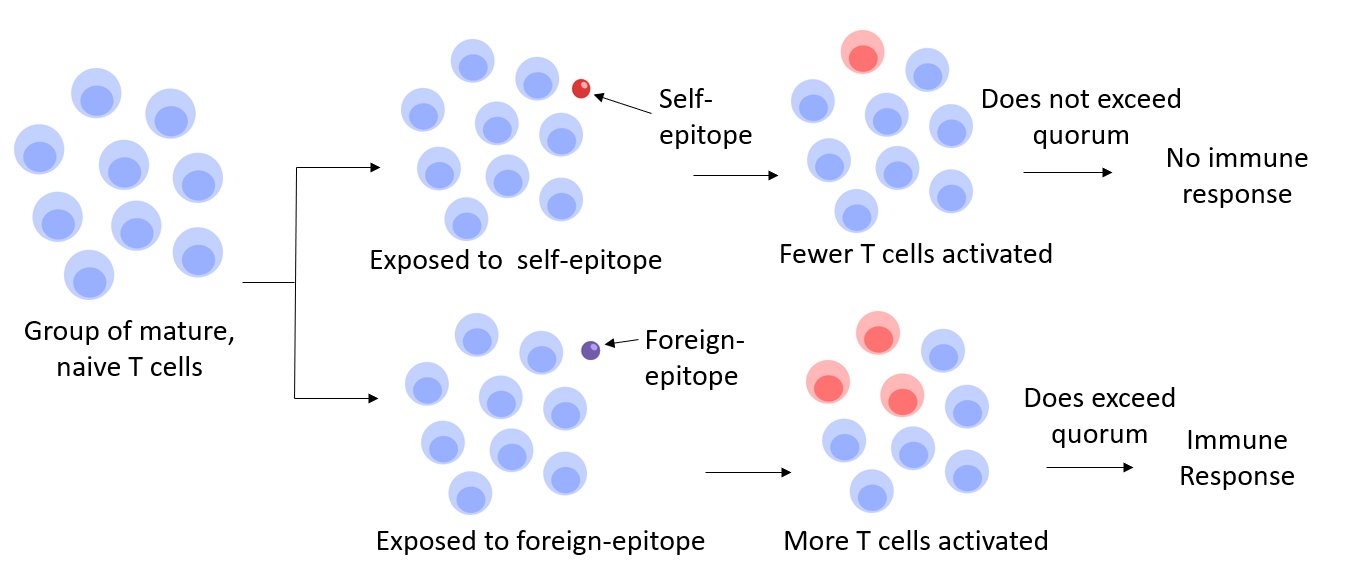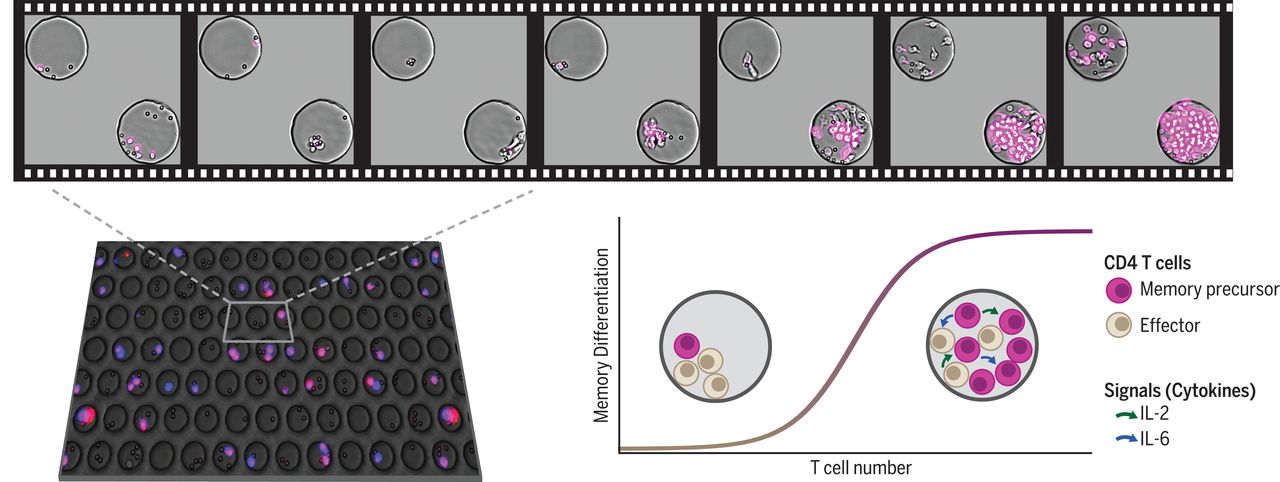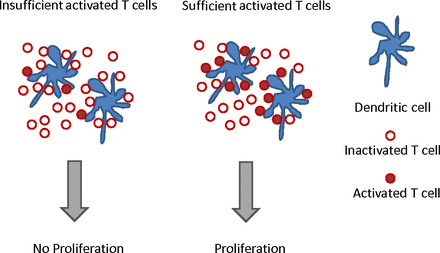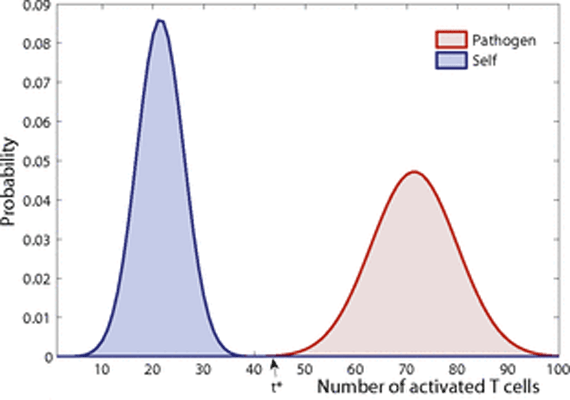Quorum sensing (Peripheral tolerance)
![]() Since encounters of thymocytes with the self-peptides in thymus is random, a candidate TCR cannot be exposed to the entirity of P self-peptide repertoire.
Since encounters of thymocytes with the self-peptides in thymus is random, a candidate TCR cannot be exposed to the entirity of P self-peptide repertoire.
There must be self-reactive peptides in mature T cell repertoire. How bad a problem is this?

![]() Enrichment of weakly binding aminoacid during negative selection implies that the chance of activation against a random peptide is small.
Enrichment of weakly binding aminoacid during negative selection implies that the chance of activation against a random peptide is small.
Estimate based on extreme value distribution, gives the probability of activiation after selection from M self-peptides as,

![]() Assume that a fraction M/P~0.7 of all possibly presented self-peptides P are encountered in the thymus;
Assume that a fraction M/P~0.7 of all possibly presented self-peptides P are encountered in the thymus;
The resulting in a self-activation probability is reduced to

![]() A large repertoire to T cells is thus needed to detect a pathogen peptide
A large repertoire to T cells is thus needed to detect a pathogen peptide
While the total number of distinct T cells is of order of 109 , let us estimate a smaller number of T~40,000 for a particular tissue
Given the large number of T cells in a tissue, the chance of self-reactivity is large!
![]() How do T cells mount an effective response to foreign epitopes while suppressing self-reactive T cells?
How do T cells mount an effective response to foreign epitopes while suppressing self-reactive T cells?
proposed that immune response requires collective decision (quorum) of Q T cells:

Quorum sensing amplifies distinction between self and foreign peptides: for Q=10
_!.jpeg)
![]() Peripheral tolerance mechanism- Regulatory T cells (Tregs):
Peripheral tolerance mechanism- Regulatory T cells (Tregs):
For an activated T cell to proliferate and differentiate to mount an immune response, sensing of the cytokine Interlukin 2 (IL2) is necessary.
Activated T cells produce IL2; Tregs consume IL2 but do not produce it.
Overconsumption of IL2 by Tregs inhibit autoimmune response even if an auto-reactive T cell is activated.
![]() Subsequent validation: M. Polonsky et al, Science 360, 6394 (2018) (offline)
Subsequent validation: M. Polonsky et al, Science 360, 6394 (2018) (offline)

![]() Informatic analysis indicates that TCRs can be distinguishes as a repertoire (set), but not individually:
Informatic analysis indicates that TCRs can be distinguishes as a repertoire (set), but not individually:
Also: F. Camaglia, ..., T. Mora, A. Walczak, N. Friedman, eLife 2023;12:e81622 (2023) (offline)


![]()